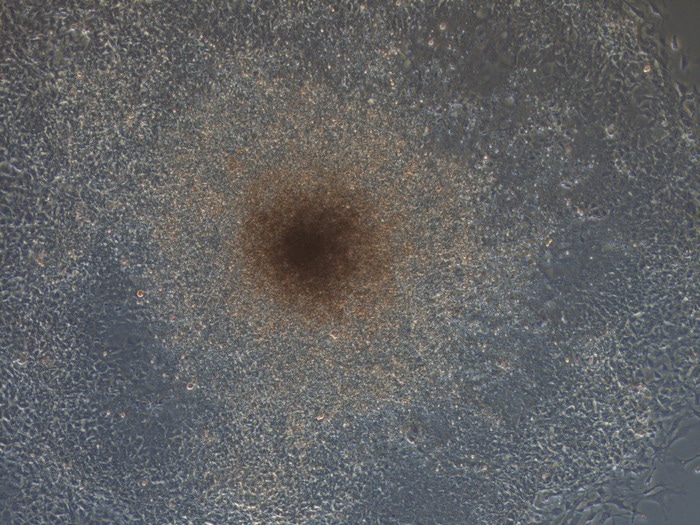Cells present in the blood like red blood cells, immune cells, and other crucial cell types are renewed continually from stem cells, the alleged hematopoietic stem and progenitor cells (HSPCs).
 Cell morphology picture (day 6) produced by the combination of Runx1, Hoxa9, and Hoxa10 transcription factors at different stages of ES directed differentiation. Image Credit: Dr. Jinyong Wang
Cell morphology picture (day 6) produced by the combination of Runx1, Hoxa9, and Hoxa10 transcription factors at different stages of ES directed differentiation. Image Credit: Dr. Jinyong Wang
Some diseases of the blood system, like leukemia or genetic disease, could be treated in an efficient manner by stem cell transplants, but appropriate, genetically matched donors are not often available.
A substitute to achieve cells from paired donors is their generation from pluripotent stem cells (PSCs) which could be obtained from early embryos or are highly appropriate for a clinical setting. This can be obtained from a patient’s skin cells via a process known as reprogramming.
Even though in theory PSCs could produce any kind of cell, their transformation to functioning, stable HSPCs in the laboratory has proven hard.
A new study reported in the journal Stem Cell Reports from Jinyong Wang and collaborators with the Chinese Academy of Sciences and Guangzhou Medical University has currently improved a combination of proteins, alleged transcription factors, which when initiated in mouse PSCs change them to HSPCs in the dish.
Over a period of 6 months, when transplantation into mice is done with the impaired HSPCs, the PSC-derived cells produced all kinds of white blood cells. Significantly, the transplanted HSPCs did not give an increase in leukemias or tumors in the receiving mice.
This proof-of-principle data indicates that PSCs could act as an unlimited source of transplantable HSPCs but future work is needed to obtain HSPCs that maintain high levels of blood cell production over prolonged periods of time and, of course, that this process would function in humans.
Source:
Journal reference:
Peng, H., et al. (2023) Prolonged generation of multi-lineage blood cells in wild-type animals from pluripotent stem cells. Stem Cell Reports. doi.org/10.1016/j.stemcr.2023.01.009.